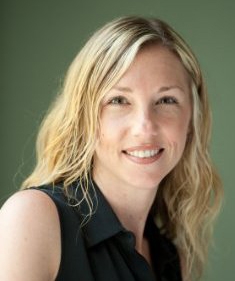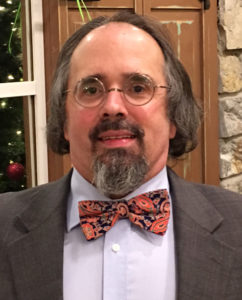Practitioners often construct their programs of research around their clinical practice. Indeed, this is the case with this inquiry. Several years ago, Albee and Piepenbring had the opportunity to work with K, a 19-year-old Caucasian male with a complicated, and well-documented neuropsychiatric history including Autism Spectrum Disorder (ASD). With the onset of puberty, K began to display a pattern of escalating maladaptive behaviors which included inappropriate sexualized behaviors, stealing, agitation, and escalating noncompliance. His poor self-regulation led to compulsive and addictive sexual-seeking gratification, through a wide range of inappropriate behaviors described as touching girls, masturbation in public settings, and stealing cell phones and credit cards to access erotic materials. K had received services at a residential treatment facility that specializes in working with youth with a history of high risk behaviors; specifically sexually problematic behaviors. In working with K, he made stunning gains, successfully participating in a work study program and attending social functions with his peers. Still, his sexuality and his need to achieve gratification continued to be an obstacle to his wellness. He was unable to access his electronics without direct supervision, and was so intent on accessing pornography, that on a trip to the public library with his peers, he used a library computer to access inappropriate adult content, and openly masturbated. This clinical situation raised many questions about how to best treat sexually problematic behaviors among ASD adolescents.

Julie Piepenbring, PhD, LCSW,

Stephen M. Tomczak, PhD, LMSW

Laura Albee, MA, BCBA
Psychosocial Problem: Sexually Problematic Behaviors
More and more clinicians are encountering individuals with ASD in clinical and educational settings. Their unique profiles, composed of social, cognitive, and communication differences, are augmented by a deep delay in their ability to process social information (Ray, Marks, & Bray-Garretson, 2004; Henault; 2006). Their lack of self-esteem, coupled with their desire for acceptance and belongingness, leave them susceptible to social rejection. From a clinical perspective, the convergence of this neurobiological impairment with the social confusion that accompanies adolescence, provides a unique challenge for untangling the relative contributions of each factor, and for developing treatment interventions that are effective (Ray et al., 2004).
Autism and Sexuality
Currently, there is limited research that explores the impact of sexuality education and high functioning adolescents with ASD. Most literature pertaining to sexuality applies to the typically developing adolescent, or those affected by an intellectual disability. Although no one instructional methodology has proven to be best, 50 years of clinical research has demonstrated that denying access to sexuality knowledge is not an effective strategy to promote adolescent sexual health (Davies & Dubie, 2012).
Due to their unique profile, research has suggested that ASD adolescents are better served by instructional methodologies that focus on socio-sexuality education (Gougeon, 2010). ASD adolescents often require a comprehensive and personalized curriculum that provides direct instruction with what is often learned incidentally, or acquired naturally by their typically developing counterparts (Gougeon, 2010). For example, individuals with ASD frequently necessitate overt teaching of facial expressions, emotions, and other non-verbal decoding skills, as well as training in initiating, maintaining and ending social interactions with peers, and the ability to discriminate between public versus private settings (e.g., Attwood, 2004; Chin & Bernard-Opitz, 2000; Gerhardt, 2006; Rogers, 2000; Travers & Tincani, 2010; Gougeon, 2010).
As the ASD youth matures, their social and sexual deficits may present as significant and problematic for procuring and maintaining intimate relationships, engaging in socially appropriate behaviors, gaining and retaining employment, and being accepted as a valued member within their community (Gougeon, 2010; Sullivan & Caterino, 2008; Travers & Tincani, 2010; Tremblay & Pigeon, 2004). These problems may prevent individuals with ASD from fully integrating with their respective communities as social and sexual beings resulting in depression, anxiety, low self-esteem, isolation and other mental health concerns (Aylott, 2000; Ozonoff, Garcia, Clark, & Lainhart, 2005; Gougeon, 2010). As a result, their needs must be addressed through the provisionary methods of appropriate, relevant, and effective socio-sexuality education (Gougeon, 2010).
Sexuality Education Interventions
Research indicates common themes for teaching socio-sexuality education to individuals on the spectrum. Here, four evidenced-based interventions designed to provide sexual education programming to ASD adolescents will be presented.
TEACCH: Treatment and Education of Autistic related Communication-handicapped Children (TEACCH) began as a comprehensive public program for children with autism in the state of North Carolina (Schopler, 1997; Sullivan & Caterino, 2008). TEACCH covers all areas of functioning, including academics, social skills, and sexuality (Sullivan & Caterino, 2008). TEACCH features four developmentally sequenced levels, which are presented to students based on their level of cognitive functioning (as cited in Sullivan & Caterino, 2008, p. 387). Those with strong cognition are exposed to all four levels, while those presenting with cognitive deficits will only complete level one (Sullivan & Caterino, 2008). From a social learning perspective, TEACCH applies the principles of discriminative training, overcorrection, restitution, and positive practice through education and role play (Sullivan & Caterino, 2008).
The Devereux Center Model: Equally significant is the Devereux Center Model; a multi-tiered sexual education program, which includes topics focused on the body, anatomy and function, social/sexual behavior, sexual life-cycle, dating, marriage, parenting, establishing relationships, abuse awareness, boundary issues, assertiveness, and self-esteem (Sullivan & Caterino, 2008; Koller, 2000). The Devereux philosophy utilizes parents as teachers whenever possible (Sullivan & Caterino, 2008). Devereux promotes sexual expression, as it is regarded as normal and natural and can be individualized in order to meet the specific needs of all recipients, including situational instruction, audio-visual materials and discussion (Sullivan & Caterino, 2008).
Social Stories and Video Modeling: Additional strategies used to personalize instruction include Social Stories (Gray, 2002; Ray et al. 2004; Tarnai and Wolfe, 2008), comic strip conversations (Gray, 2002; Ray et al. 2004), and video modeling and task analysis (Wolfe & Blanchett, 2003; Wolfe et al. 2009), many of which are Applied Behavior Analysis (ABA) based (Gougeon, 2010). Developed by Gray and Garand (1993), social stories are excellent for placing emphasis on “hidden rules” of engagement, which can best benefit the adolescent. Social stories facilitate expectations without being punitive.
Groups: Groups can provide the perfect platform for education, friendship, community, and engagement. Groups provide a natural laboratory where members can experiment with new ways of being (Corey, Corey, & Corey, 2014). A well-defined group can provide a perfect venue to create acceptance, and a willingness to offer each member security and guidance, so that they feel socially accepted and included.
Additional Educational Resources
Many school districts and private institutions are adopting curriculums that inform, educate, and support healthy relationships so that adolescents with ASD can successfully transition into adulthood and society. The literature cited three such educational programs.
- The Healthy Relationships & Autism Curriculum (Sutton & Wesley Spectrum Services, 2013) has been proven to be an effective intervention for increased knowledge and acquisition with topics including personal hygiene, biologically-based sexuality education, and relationships (Pask, 2015; Greiert, 2016).
- The Tackling Teenage Training (TTT) program is another successful curriculum distinguished for promoting psychosexual knowledge in a sample of thirty 11-19 year-old adolescents with ASD (Deckker, van der Vegt, Visser, Tick, Boudesteijn, Verhulst, Maras, & Graves-Lord, 2014; Greiert, 2016). Although the results of the TTT study are not yet published, this 18 session format utilizing one-on-one psycho-educational instruction is receiving notoriety due to the implementation of an instructional protocol that can monitor the efficacy of each ASD participant (Deckker et al. 2014; Greiert, 2016).
- Finally, Intimate Relationships and Sexual Health: A Curriculum for Teaching Adolescents / Adults with High-Functioning Autism Spectrum Disorders and Other Social Challenges created by Davis and Dubie (2012) is perhaps one of the most comprehensive sexuality curriculums to date (Greiert, 2016). This highly structured 11 unit curriculum addresses sexuality and relationships using video modeling, role-play, exercises, and discussions. Each intervention will begin with a pre-assessment and conclude with a post-test assessment. Topics include sexual responses and partnered sex; sexual anatomy; reproductive health; contraception and sexually transmitted infections; dating; stages of relationships; attitudes, values, and differences; and sexual harassment, aggression, and abuse (Davies & Dubie, 2012).
Taken together, this research suggests several key components that are critical to the success of autism specific sexuality education. First, the intervention must be flexible in order to adapt to the various cognitive abilities of the ASD population. Second, training parents to be partners in this educational endeavor is essential. Third, by incorporating social stories and other instructional ancillaries the learner will gain practice in healthy scripts and behaviors. Finally, group interventions can offer a welcome source of community and friendship to guide the adolescent through these challenging topics.
In summary, adolescents with ASD are sexual beings who can and should be educated on how best to handle their own sexuality (Koller, 2000; Sullivan & Caterino, 2008; Tullis & Zangrillo, 2013). Existing research supports the use of sexuality education, however no one methodology can be determined the most appropriate. While empirically derived sexuality education for adolescents and adults with ASD is limited, the current body of literature does provide support for direct and measured teaching methodologies for self-care and programs based on social interaction (Mason-Jones et al. 2012; Klett & Turan, 2012; Tullis & Zangrillo, 2013).
Laura Albee, MA, BCBA, is a Board-Certified Behavior Analyst for the Torrington Public School District, Torrington, CT and a MSW Candidate in May 2017 at Southern Connecticut State University. Stephen Monroe Tomczak, PhD, LMSW, is Associate Professor of Social Welfare Policy and Community Organization, Esther Howe, DSW/PhD, LCSW, is Professor, and Julie Piepenbring, PhD, LCSW, is Assistant Professor in the Department of Social Work at Southern Connecticut State University, located in Hartford, CT. For more information, please visit www.southernct.edu/socialwork/.
References
Attwood, T. (2004). Exploring Feelings: Cognitive Behavior Therapy to Manage Anger and Anxiety. Arlington, TX: Future Horizons.
Aylott, J. (2000). Autism in adulthood: The concepts of identity and differences. British Journal of Nursing, 9(13), 851-858.
Chin, H. Y., & Bernard-Opitz, V. (2000). Teaching conversational skills to children with autism: The effects on the development of theory of mind. Journal of Autism and Developmental Disorders, 30(6), 569-583.
Corey, M. S., Corey, G., & Corey, C. (2014). Groups: Process and Practice (9th ed). New York, NY: Brooks Cole. 3, 6, 43, 60, 141.
Davies, C., & Dubie, M. (2012). Intimate Relationships and Sexual Health: A Curriculum for Teaching Adolescents / Adults with High-Functioning Autism Spectrum Disorders and Other Social Challenges. Shawnee Mission, Kansas: AAPC Publishing.
Dekker, L.P., Van der Vegt, E.J.M., Visser, K., Tick, N., Boudesteijn, F., Verhulst, F.C., Maras, A., & Greaves-Lord, K. (2015). Improving psychosexual knowledge in adolescents with autism spectrum disorder: Pilot of the Tackling Teenage Training Program. Journal of Autism and Development Disorder, 45, 1532-1540.
Gerhardt, P. (2006). Sexuality instruction and autism spectrum disorders. Autism & Asperger Digest Magazine, 44-46.
Gougeon, N. A. (2010). Sexuality and autism: A critical review of selected literature using a social-relational model of disability. American Journal of Sexuality Education. 5, 328-361
Gray, C. A. (2002). My Social Stories Book. London, England: Jessica Kingsley Publishers.
Greiert, B. S. (2016). Key components of successful sexuality education for high functioning students with autism spectrum disorder. A Dissertation Presented to the Faculty of the Morgridge College of Education, University of Denver. Retrieved on November 10, 2016 Proquest.
Henault, I. (2006). Asperger’s Syndrome and Sexuality: From Adolescence Through Adulthood. Jessica Kingsley Publishers: London and Philadelphia. 15, 17, 37, 43, 57.
Klett, L. S., & Turan, Y. (2012). Generalized effects of social stories with task analysis for Teaching menstrual care to three young girls with autism. Sexuality and Disability. 30, 319- 336.
Koller, R. (2000). Sexuality and adolescents with autism. Sexuality and Disability. 18(2), 125-135.
Mason-Jones, A. J., Crisp, C., Momberg, M., Koech, J., De Koker, P., & Mathews, C. (2012). A systematic review of the role of school-based healthcare in adolescent sexual, reproductive, and mental health. Systematic Reviews. Retrieved on November 25, 2016 from http://www.systematicreviewsjournal.com/content/1/1/49.
Ozonoff, S., Garcia, N., Clark, E., & Lainhart, J. E. (2005). MMPI-2 personality profiles of high functioning adults with autism spectrum disorders. Assessment, 12(1), 86-95.
Pask, E. A. (2015). Facilitating healthy interpersonal relationships for adolescents with autism: An examination of knowledge acquisition and retention over time. Dissertations & Theses Gradworks.
Ray, F., Marks, C., & Bray-Garretson, H. (2004). Challenges to treating adolescents with asperger’s syndrome who are sexually abusive. Sexual Addiction and Compulsivity. 11. 265-285.
Rogers, S.J. (2000). Interventions that facilitate socialization in children with autism. Journal of Autism and Developmental Disorders. 30, 399- 409.
Schopler, E. (1997). Implementation of TEACH philosophy. In D.J. Cohen & F. R. Volkmar (Eds.) Handbook of Autism and Pervasive Developmental Disorders (pp. 767-795). New York: John Wiley.
Sullivan, A., & Caterino, L. C. (2008). Addressing the sexuality and sex education of individuals with autism spectrum disorders. Education and Treatment of Children. 31(3), 381-394.
Tarnai, B., & Wolfe, P. S. (2008). Social stories for sexuality education for persons with autism/pervasive developmental disorder. Sexuality and Disability, 26, 29-36.
TEACH staff. (n.d.). Structured teaching. Retrieved from http://teacch.com/educational-approaches/structured-teaching-teacch-staff
Travers, J., & Tincani, M. (2010). Sexuality education for individuals with autism spectrum disorders: Critical issues and decision making guidelines. Education and Training in Autism and Developmental Disabilities, 45(2), 284-293.
Tremblay, M., & Pigeon, C. (2004). De la reconnaissance du droit a l’ elargissement de l’espace democratique pour les “personnes presentant une deficience intellectuelle”. Revue Francophone de la Deficience Intellectuelle, 15, 133-141.
Tullis, C. A. & Zangrillo, A. N. (2013). Sexuality education for adolescents and adults with autism spectrum disorders. Psychology in Schools. 50(9), 866-875.
Wolfe, P. S., & Blanchett, W. J. (2003). Sex education for students with disabilities: An evaluation guide. Teaching Exceptional Children, 36(1), 46-51.
Wolfe, P. S., Condo, B., & Hardaway, E. (2009). Sociosexulaity education for persons with autism spectrum disorders using principles of applied behavior analysis. Teaching Exceptional Children, 42(1), 50-61.




